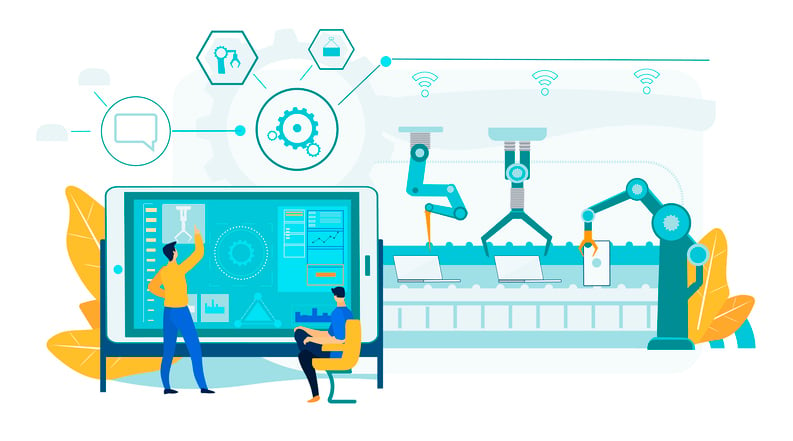Boost your productivity to create operational and economic improvement. Our article provides tangible strategies that increase your productivity, and create positive effects on growth. We pinpoint the critical role of technology, the value of human capital, and operational efficiencies that can lead to high-value gains.
Key takeaways
- Improved productivity creates multiple financial benefits while improving living standards.
- Advancements in automation, AI, and workflow solutions, when aligned with business goals, significantly improve productivity.
- Human capital is crucial for productivity, with employee education and skill development being key to improved business performance.
- HR strategies play a central role in nurturing a productive workforce and teams.
The role of productivity in economic growth

In its simplest form, productivity is the amount of output produced per unit of input. But to economists and business leaders, productivity is much more; it’s the engine that drives economic growth and prosperity.
When productivity rises, businesses can generate more output with the same level of input, leading to:
- Higher revenues
- Larger GDP
- Increased wages
- Reduced prices
- Elevated profits
Collectively, these and other factors contribute to economic growth and improved living standards.
One example that showcases the impact of productivity growth is the U.S. business sector. Since 1947, it has increased the output of goods and services by ninefold with only a modest rise in hours worked.
Understanding labor productivity
Why is productivity important? Labor productivity, defined as the quantity of goods and services produced per unit of labor input, is a key concept in economic studies. It effectively indicates how efficiently labor and capital are organized to boost production.
This measurement is instrumental in evaluating economic activity and identifying methods to boost output for each input unit. Labor statistics are crucial in understanding and analyzing productivity trends across various industries.
When labor productivity rises, it signifies that a greater amount of goods and services are being produced without a corresponding increase in labor, a key factor in achieving sustainable economic growth. As remote offices and virtual employees boom, understanding changes in productivity is essential, with analysts expecting similar-to-higher levels of remote working by 2028.
The connection between productivity growth and prosperity
Productivity growth is not confined to economic theory; it paves the way to prosperity. As productivity escalates, it has the potential to:
- Lower prices
- Enhance profit margins
- Increase stock value
- Boost shareholder returns
Higher productivity can also result in higher wages, which contributes to the welfare of employees and society at large.
Management consultants McKinsey highlight in their report Rekindling US productivity for a new era that “Regaining historical rates of productivity growth would add $10 trillion to US GDP—a boost needed to confront workforce shortages, debt, inflation, and the energy transition.”
Leveraging technology for enhanced productivity

Revolutionizing existing work processes, technology has opened new avenues for productivity and efficiency. Be it workflow software solutions streamlining operations across departments or digital data storage services simplifying data retrieval, technology significantly boosts productivity. Kumospace, as an innovative virtual office platform, enhances communication and collaboration by offering an immersive space that mirrors real-world interactions, thereby facilitating a more engaging and efficient remote working environment.
It’s not just about implementing new technologies, but aligning them with business goals is a critical step in driving operational efficiency. Maximizing productivity among teams through improved workflow is a key technology benefit for remote organizations.
Technology as a catalyst for efficiency
Technology acts as a catalyst for efficiency. From improving internal communications that increase employee accessibility and work flexibility, to mobile technology that capitalizes on the BYOD (Bring Your Own Device) trend for increased work efficiency, technology is reshaping the way we work. It’s not just about working harder, but smarter through modern technology.
Process automation, facilitated by robotics, accelerates production by undertaking repetitive tasks, freeing human workers for more complex and value-added activities. Modern technologies like IoT sensors and artificial intelligence are instrumental in real-time production optimization and predictive maintenance, bolstering overall manufacturing efficiency.
Investing in the right tools
Businesses should invest in suitable technologies to optimize productivity gains. This requires a thorough analysis of business needs, budget constraints, and a tech stack that aligns with company goals and culture. It’s about choosing solutions that are simple to adopt, offer a positive return on investment, and resolve high-priority business issues.
Effective alignment between IT strategies and company objectives is key to ensuring that investments in technology lead to anticipated productivity gains. Software systems are crucial in efficiently tracking productivity, performing analytics, and gathering insights on workforce performance.
Incorporating Kumospace in productivity strategies
Integrating platforms like Kumospace into a business's digital toolkit can revolutionize remote workforce management. Kumospace provides a virtual environment that replicates the dynamics of physical office spaces, enhancing spontaneity and interaction among team members. This leads to improved communication, a key component of productivity, especially in remote settings where team cohesion can be challenging.
Adopting such innovative tools can significantly aid organizations in maintaining a vibrant, interactive, and highly productive work culture, regardless of physical location.
Human capital: The engine of productivity

Human capital, representing the economic value of a worker’s experience and skills, fuels productivity. It includes factors such as:
- Education
- Training
- Ability to work as part of a team
- Intelligence
- Health
Investments in improving employee education, experience, and abilities boost the quality of human capital, leading to greater productivity and increased profitability for businesses.
In essence, research suggests that the more we invest in our people, the more productive they become, yielding the same amount of increased productivity.
Fostering employee skills and motivation
Fostering employee skills and motivation goes beyond just improving productivity; it’s about creating a fulfilling work environment that encourages growth. Employee motivation is fundamentally connected to improved workplace performance, driving employee engagement, and productivity. Acknowledging individual and team achievements and promoting a clear sense of purpose within the organization significantly boosts employee motivation.
Providing role- and aspiration-based training and professional development opportunities encourages skill improvement and serves as an incentive for employees, boosting their motivation. A motivated workforce, supported by recognition and opportunities for growth, can achieve higher levels of performance, subsequently driving overall productivity within the enterprise.
The impact of HR decisions on productivity
Human resources significantly contribute to boosting productivity. Some ways HR analytics and decisions impact productivity include:
- Hiring highly qualified candidates
- Ensuring a productive workforce
- Developing effective training programs that empower employees
- Managing a fair and competitive compensation strategy to reduce employee turnover and allow workers to focus on enhancing business productivity.
Regular, transparent, and constructive communication is essential for motivating employees and addressing issues constructively. By building trust and fostering a positive work environment, HR departments contribute to organizational success.
Streamlining operations to maximize output

Streamlining operations strategically maximizes output. It encompasses:
- Business simplification
- Efficiency enhancement
- Invoicing process standardization
- Imposing high workplace standards for communication, productivity, and professionalism
Streamlining operations drives improves efficiency and boosts productivity by allowing the workforce to focus on value-added activities that contribute to business growth.
Identifying bottlenecks and making adjustments
Productivity can be significantly impacted by bottlenecks, which are characterized by accumulated backlogged work, long waiting times, and high-stress levels. Enhancing productivity requires the identification and rectification of such bottlenecks, typically poor data quality, unclear workflows, or information silos in remote organizations.
Flow charts can be an effective tool for visualizing and identifying where bottlenecks occur within a process, and the ‘5 Whys’ technique can help uncover their root cause.
Strategies such as increasing the efficiency of the bottleneck step or decreasing input into it can alleviate bottlenecks and enhance overall productivity.
Balancing quality with quantity
In the quest to increase productivity, it’s important not to lose sight of the balance between quality and quantity. Quality assurance measures are essential in maintaining this balance to avoid effectiveness loss in business processes.
An industrious and positive workplace remote office atmosphere is key to preventing employee burnout and ensuring that increased efforts do not lead to a decline in quality.
Strategic prioritization and delegation

In a world focused on productivity, not all tasks are created equal. Strategic prioritization and delegation are critical for focusing on high-value tasks and distributing other responsibilities effectively across teams. Utilizing a Priority Matrix can help identify high-value tasks by considering their urgency and importance.
Moreover, effective delegation can free up project managers to concentrate on high-impact tasks that have a greater impact on business outcomes.
The art of saying "no" to low-impact tasks
The art of saying “no” to low-impact tasks is a crucial skill in maximizing productivity. The Impact Effort Matrix serves as a tool to classify tasks based on the effort they require and their potential impact, guiding users to focus on tasks that are low effort yet yield high impact.
Learning to tactfully decline tasks that do not align with key priorities can help boost an individual’s contributions to the company’s success. When refusing a task, offering alternative options can preserve professional relationships and demonstrate respect for one’s commitments.
Mastering the technique of effective delegation
Mastering the technique of effective delegation is not just about offloading tasks. It’s about strategically identifying and selecting team members with appropriate skills to tackle specific tasks, focusing on goals, and being receptive to new methods they might propose. Utilizing the ABCDE method helps categorize tasks to discern the ones that are crucial and need your attention from those that can be delegated to others.
Energy management in the workplace

In a work environment, managing energy is considered more crucial than rigorous time management to boost effectiveness and prevent burnout. Acknowledging that individual energy levels naturally fluctuate throughout the day helps leaders and HR understand their impact on focus and productivity. By managing energy efficiently, tasks can be completed in less time, further enhancing productivity.
Improving productivity by managing workplace energy necessitates recognizing the central role of employee well-being and vitality.
Peak performance times
Individual peak productivity among workers occurs at different times, with early-rising high-achievers avoiding productive night owls, depending on time zones.. Employees can improve their productivity by tackling time-consuming and essential tasks during their high-productivity points.
Major planning and high-priority tasks should coincide with an employee’s most productive hours to maximize efficiency. Optimal work results can be achieved by identifying and utilizing times when individual energy levels are at their highest.
Cultivating an environment for high energy levels
Cultivating a positive environment that promotes high energy levels is key to sustaining productivity. Minimizing distractions such as incessant email notifications and pervasive noise, especially during periods of high energy, can promote sustained concentration and energy levels in employees.
Building a sense of community among remote employees contributes to a more vibrant, engaged, and energetic workforce, which is essential in maintaining high energy levels. Incorporating breaks that include activities like:
- Taking walks
- Stretching exercises
- Team-building games
- Mindfulness exercises
These tips can help reinvigorate employees, boosting their energy levels to facilitate productivity during the workday.
Measuring and responding to productivity metrics
The measurement and response to productivity metrics are crucial components in driving improvements. Productivity measures among manufacturers, sales staff, and knowledge workers, are crucial for an organization’s competitiveness as they reflect the output relative to the inputs used.
Key productivity measures and what they tell us
Key productivity metrics like revenue per employee, customer satisfaction, or sales made provide valuable insights into performance. However, quantifying white-collar productivity presents unique challenges as productivity measures must accurately reflect the contributions of roles not directly involved in physical production.
Documenting and evaluating workflows can:
- Reveal inefficiencies in business processes
- Allow for the identification of redundant activities or those that can be automated
- Monitor workflows over time to expose peak productivity hours, optimizing their use.
Using data to drive productivity improvements
Data is the lifeblood driving modern business productivity improvements. Some key points to consider when analyzing productivity metrics are:
- Comparing similar departments or companies to draw relevant insights
- Analyzing productivity trends over time
- Recognizing that a company showing improvement may be more productive in the long run than one with currently higher productivity but declining trends.
These considerations will help you and business leaders gain a deeper understanding of productivity and make informed decisions to drive improvements.
Regular reviews and adjustments to technology strategies are necessary to ensure they remain effective and aligned with evolving business goals alongside changing market conditions in a complex and competitive environment.
Summary
Productivity is the driving force behind economic growth and prosperity. From leveraging technology to delivering efficiency improvements, and fostering human capital or strategically prioritizing tasks, improving productivity requires a concerted effort across the business.
Remember, it’s not just about doing more, but doing better with existing resources. By harnessing the power of productivity, businesses can unleash their full potential, drive growth, and succeed in a competitive global economy.
In the remote office era, tracking productivity at a highly granular level is key to business success and worker satisfaction, while identifying opportunities for improvement, and ensuring your employees and motivated and engaged.
Frequently Asked Questions
Productivity in economics measures the efficiency of producing goods and services by comparing output to input. It indicates how much is produced with a given set of inputs.
High productivity leads to increased output per worker, which in turn allows firms to generate higher revenues and contribute to higher Gross Domestic Product. This ultimately benefits the economy by creating more opportunities for growth and increased demand for goods and services.
Productivity is calculated as GDP per hour of work, adjusted for inflation and cost of living, while GDP measures the total economic output of a country, and is used to calculate productivity ratios across different sectors.
Technology enhances productivity by streamlining processes and allowing for more efficient use of resources, such as workflow software solutions and digital data storage services.
Human capital, the economic value of a worker's experience and skills, is crucial in driving productivity. Investments in improving employee education and skills lead to enhanced human capital and increased productivity.




